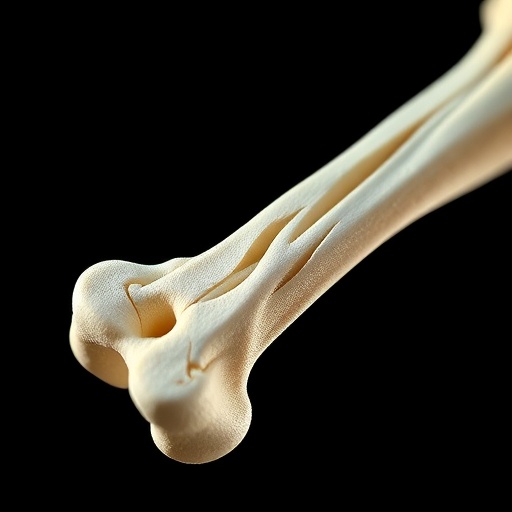In the evolving realm of forensic anthropology, the microscopic examination of bone tissue is taking center stage as a groundbreaking method to unravel the silent narratives of the deceased. A recent comprehensive technical review sheds light on the advances in bone histology, specifically focusing on the microstructural analysis of bones that have undergone taphonomic alterations due to burial or exposure to subaerial environments. This nuanced exploration unravels how forensic scientists are leveraging microscopic insights to reconstruct the postmortem history of human remains, thus providing critical data in legal investigations and archaeological contexts.
The discipline of bone histology, the microscopic study of bone tissue, traditionally serves biological and medical sciences but has recently surged in forensic applications. When bones undergo taphonomic processes—those natural changes occurring postmortem such as decay, weathering, and mineral infiltration—their microstructure is altered. These changes were often viewed as obstacles for analysis, but cutting-edge techniques now allow experts to decode these alterations, revealing timelines, environmental conditions, and even forensic trauma with remarkable precision.
Subaerial exposure, referring to bones left exposed on or near the surface, subjects skeletal remains to a host of environmental factors including ultraviolet radiation, temperature fluctuations, moisture, and microbial activity. Each of these agents induces distinctive microstructural changes within bone matrix and mineral content. Similarly, burial contexts impose different taphonomic pressures, such as soil chemistry, microbial consortia, and sediment compaction, which uniquely affect the bone’s microarchitecture. By delineating these alterations at the microscopic scale, forensic anthropologists can more accurately determine the postmortem interval (PMI) and reconstruct depositional histories.
.adsslot_iSCPFNUyLt{ width:728px !important; height:90px !important; }
@media (max-width:1199px) { .adsslot_iSCPFNUyLt{ width:468px !important; height:60px !important; } }
@media (max-width:767px) { .adsslot_iSCPFNUyLt{ width:320px !important; height:50px !important; } }
ADVERTISEMENT
Recent strides in microstructural imaging techniques, including scanning electron microscopy (SEM), synchrotron radiation-based imaging, and advanced histochemical staining, have revolutionized the quality and depth of bone histological analysis. These tools enable visualization of osteon remodeling patterns, mineral density variations, and microcrack propagation—features essential to interpreting taphonomic signatures. When combined with statistical modeling, this data allows the differentiation between exposure scenarios and potentially identifies unnatural alterations caused by human activity or environmental trauma.
One of the most intriguing aspects highlighted in the technical review is how microstructural bone analysis can discriminate between burial environments. For instance, bones recovered from acidic versus alkaline soils display distinct patterns of mineral leaching and collagen degradation. Acidic soils accelerate mineral dissolution, resulting in increased porosity and compromised microstructural integrity, whereas alkaline settings tend to preserve structural features longer. Understanding these nuances aids forensic investigators in hypothesizing burial conditions where contextual information is absent.
The role of microbial bioerosion in shaping the histological landscape of exposed or buried bone also commands attention. Microorganisms, including bacteria and fungi, infiltrate bone at microscopic levels, eroding the organic matrix and altering mineral phases. Advanced histological techniques can detect the extent and nature of microbial tunneling, thereby serving as proxies for the elapsed time since death and environmental exposure. Such microbiologically informed interpretations enhance the temporal resolution of forensic analyses beyond traditional macroscopic approaches.
Moreover, the integration of digital image analysis and machine learning algorithms into microstructural forensic histology is paving the way for automated and more objective assessments. Artificial intelligence (AI) models trained to recognize patterns of degradation and remodeling in taphonomically altered bone microstructure promise faster, standardized interpretations with minimized human bias. This evolution not only accelerates forensic workflows but also opens the door for remote and large-scale examinations in mass disaster scenarios.
Beyond forensic contexts, these histological advancements illuminate archaeological investigations as well. Ancient bones, often severely taphonomically transformed, can now be reanalyzed to extract lifestyle, dietary, and environmental data once thought irretrievable. The microstructural fingerprints left behind by taphonomic agent interactions serve as time capsules, chronicling centuries or millennia of natural and anthropogenic influences on skeletal remains.
Importantly, this burgeoning field does not ignore the limitations and challenges inherent in microstructural bone histology. Factors such as the heterogeneity of bone tissue, post-excavation handling effects, and analytical variability must be meticulously controlled. The review emphasizes rigorous sample preparation protocols and cross-validation using multiple microscopic and spectroscopic techniques to bolster reliability and reproducibility of results in forensic settings.
The implications of these microstructural insights transcend academic curiosity, impacting real-world applications such as human identification, trauma analysis, and the assessment of clandestine burial sites. Forensic experts can harness these tools to discern whether microdamage patterns stem from perimortem violence or postmortem environmental stress, aiding criminal investigations. Additionally, quantifying microstructural degradation provides estimations of PMI critical in legal contexts where timing significantly affects case outcomes.
As the field advances, interdisciplinary collaborations become increasingly vital. Integrating expertise from materials science, microbiology, chemistry, and computer science enriches the analytical toolbox available to forensic anthropologists. Such synergistic approaches ensure the continual evolution of microstructural bone histology from a specialized niche into a robust, widely accepted forensic modality.
In conclusion, the recent technical review marks a turning point in forensic anthropology, showcasing how microstructural analysis of taphonomically altered bones has matured into an indispensable investigative avenue. By harnessing state-of-the-art microscopy, biochemical assays, and computational techniques, modern forensic science can unravel the microscopic secrets etched within skeletal remains. This transformative capability not only holds promise for solving intricate forensic mysteries but also enriches our broader understanding of human history and decomposition science.
Subject of Research: Microstructural analysis of taphonomically altered buried or subaerially exposed bone in forensic anthropology.
Article Title: Bone histology for forensic anthropology: a technical review on the advances in microstructural analysis of taphonomically altered buried or subaerially exposed bone.
Article References:
Sluis, I., Duijst, W. & Krap, T. Bone histology for forensic anthropology: a technical review on the advances in microstructural analysis of taphonomically altered buried or subaerially exposed bone. Int J Legal Med (2025). https://doi.org/10.1007/s00414-025-03536-9
Image Credits: AI Generated
Tags: advances in bone histologyarchaeological context of human remainsbone microstructure analysisenvironmental effects on bonesforensic anthropology techniquesforensic histology applicationsforensic trauma identificationlegal investigations in anthropologymicroscopic examination of bone tissuepostmortem history reconstructionsubaerial exposure of skeletal remainstaphonomic alterations in bone






